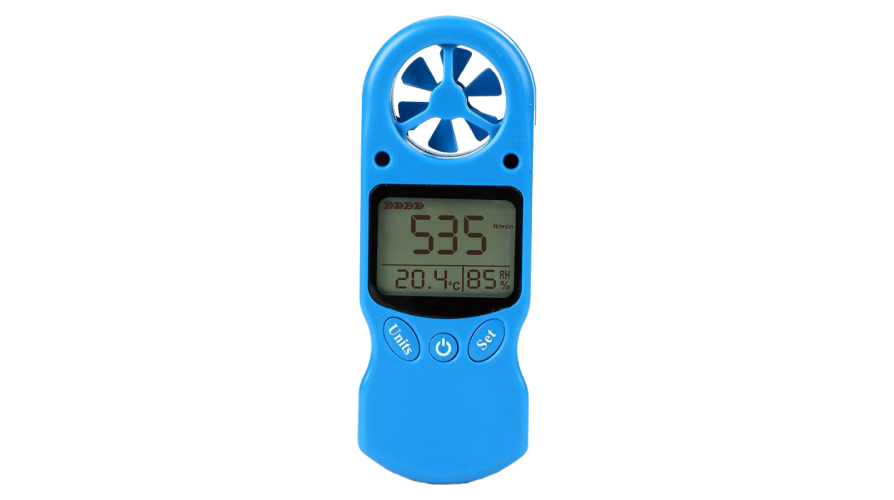Top Features to Try To Find in an Effective Anemometer for Accurate Wind Dimension
Top Features to Try To Find in an Effective Anemometer for Accurate Wind Dimension
Blog Article
All You Need to Know About Anemometers: Exactly How They Function, Why They Matter, and Where to Make use of Them
Anemometers, however typically forgotten in the realm of scientific instruments, play a vital role in numerous fields, using important understandings into wind speed and air flow patterns. Understanding the auto mechanics behind these devices is vital for any person seeking to harness the power of this information. From meteorologists tracking weather condition patterns to designers developing frameworks with wind loads in mind, the applications of anemometers are significant and varied. As we explore the complexities of anemometer modern technology, we will reveal the inner functions of these devices, their relevance, and the key factors to consider when selecting the appropriate anemometer for certain applications.

Anemometer Essentials
A necessary instrument made use of to determine wind speed and instructions, the anemometer plays a critical function in weather forecasting and numerous markets. An anemometer generally is composed of three or 4 cups that rotate in the wind, a vane that directs into the wind, and sensors to track the motions or turnings.
There are different kinds of anemometers readily available, including mug anemometers, vane anemometers, hot-wire anemometers, and sonic anemometers, each with its unique functions and applications. Cup anemometers are frequently made use of for basic wind speed measurements, while vane anemometers are chosen for directional dimensions.
Concepts of Anemometer Procedure
Structure on the foundational understanding of anemometer fundamentals, the principles of anemometer procedure clarify the mechanics behind wind rate and instructions measurements. Cup anemometers, for instance, have 3 or more cups that record the wind, creating them to spin faster as the wind rate rises. Hot-wire anemometers rely on a warmed cord that cools down as wind passes over it, with the rate of cooling down figuring out the wind speed.
Significance of Anemometers
Anemometers play a vital role in determining wind rate and instructions, offering crucial data for weather forecasting, environment researches, ecological surveillance, and aeronautics procedures. Meteorologists depend on anemometers to collect precise wind data, aiding them recognize climate patterns, forecast tornados, and issue timely warnings to the public. Wind farm drivers make use of anemometers to analyze wind conditions and take full advantage of electrical energy manufacturing from wind turbines.
Applications Throughout Numerous Industries
Applications of anemometers cover across varied sectors, showcasing their convenience and utility beyond weather forecasting. In the sustainable power market, anemometers play an important role in examining wind problems for wind farm placements, guaranteeing optimal power production. Industries like building and construction and mining use anemometers to pop over to this web-site keep track of wind speeds, crucial for safety and security procedures, particularly when functioning at heights or in open-pit mines where solid winds can position threats. Anemometers are likewise indispensable in the aeronautics market, helping pilots in understanding airspeed and wind direction for secure take-offs and landings. The maritime field gain from anemometers for ship navigating, aiding sailors expect climate changes and change courses accordingly. In agriculture, anemometers help farmers in taking care of crop spraying by supplying real-time data on wind speed to prevent drift. Anemometers find applications in HVAC systems to maximize airflow and enhance energy effectiveness in structures. The varied usage instances of anemometers emphasize their click for source importance across official site different markets, highlighting their essential function in improving functional security and performance (anemometer).
:max_bytes(150000):strip_icc()/GettyImages-186864034-58e3355e5f9b58ef7e576b44.jpg)
Picking the Right Anemometer for Your Needs
For basic purposes, a cup anemometer is ideal for measuring wind rate, while a vane anemometer provides wind direction information. Hot-wire anemometers are perfect for reduced airspeed dimensions, and ultrasonic anemometers provide high accuracy and resilience.

Conclusion
In verdict, anemometers play a critical function in gauging wind speed and instructions across different industries. It is vital to think about the importance of anemometers in order to make enlightened decisions when picking the most suitable gadget for determining wind problems.
There are numerous types of anemometers offered, consisting of cup anemometers, vane anemometers, hot-wire anemometers, and sonic anemometers, each with its special attributes and applications. Cup anemometers are frequently made use of for standard wind speed measurements, while vane anemometers are liked for directional dimensions. Hot-wire anemometers are ideal for low airspeeds, and sonic anemometers are excellent for high-precision measurements in research and industrial setups.Building on the fundamental understanding of anemometer fundamentals, the principles of anemometer operation illuminate the technicians behind wind rate and direction dimensions. For basic objectives, a cup anemometer is ideal for determining wind rate, while a vane anemometer provides wind direction information.
Report this page